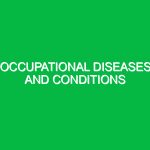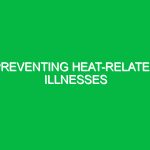Occupational asthma is a growing concern within the Health, Safety, and Environment (HSE) domain, affecting countless workers across various industries. Defined as asthma that is directly related to workplace exposures, it often results from inhaling allergens or irritants in the workplace. In this article, we will delve into the intricacies of recognizing occupational asthma, its risks, safety precautions, and the regulations that govern it.
Understanding Occupational Asthma
Recognizing occupational asthma begins with understanding its fundamental nature. Unlike other forms of asthma, occupational asthma arises specifically due to workplace exposures. For instance, a factory worker exposed to dust from certain chemicals or a healthcare professional inhaling latex particles may develop this condition over time. According to the American Thoracic Society, occupational asthma accounts for an estimated 10-20% of asthma cases in adults.
What makes recognizing occupational asthma crucial is its often insidious onset. Symptoms may not appear immediately, sometimes taking months or years to manifest. This delay can lead to misdiagnosis or underreporting, complicating the path to effective treatment. A personal anecdote illustrates this: a friend working in a paint shop developed persistent cough and wheezing over several years, initially dismissing it as seasonal allergies. It wasn’t until he was diagnosed with occupational asthma that he understood the link between his symptoms and his workplace environment.
Identifying Hazards and Risks Associated with Occupational Asthma
Various hazards in the workplace can contribute to the development of occupational asthma. These can be broadly categorized into allergens and irritants.
Allergens
Allergens are substances that can cause an allergic reaction. Common allergens in the workplace include:
- Latex: Found in gloves and other medical supplies, latex can trigger asthma symptoms in sensitive individuals.
- Pollen: Outdoor allergens like pollen can become significant in agricultural settings, affecting workers during peak seasons.
- Animal Dander: Employees in veterinary hospitals or laboratories may be exposed to dander, which can provoke asthma.
Irritants
Irritants are substances that can cause direct damage to the airways. Some common irritants include:
- Chemical Fumes: Workers in manufacturing or chemical plants may inhale fumes from solvents or adhesives, which can irritate the respiratory tract.
- Dust: Construction workers or miners are often exposed to silica or other types of dust, leading to respiratory issues over time.
- Smoke: Those working in environments where burning occurs, like firefighters or waste management professionals, may constantly inhale smoke.
Recognizing occupational asthma entails being aware of these potential hazards and understanding their impact on health.
Safety Precautions and Best Practices
Implementing safety precautions is vital for preventing occupational asthma. Below are detailed safety measures that can help mitigate risks:
1. Conducting Risk Assessments
Employers should regularly conduct risk assessments to identify potential asthma triggers in the workplace. This includes evaluating air quality, identifying hazardous materials, and ensuring that safety data sheets (SDS) are available and comprehensible to all employees.
2. Implementing Control Measures
Once hazards are identified, control measures must be implemented. This can include:
- Engineering Controls: These involve redesigning processes to minimize exposure. For instance, using closed systems for chemical handling can dramatically reduce inhalation risks.
- Personal Protective Equipment (PPE): Providing appropriate PPE, such as respirators and masks, can protect workers from inhaling harmful substances.
- Workplace Hygiene: Regular cleaning and maintaining a clutter-free environment can reduce dust and allergen accumulation.
3. Training and Education
Educating employees about the risks of occupational asthma and how to recognize its symptoms is essential. Training programs should cover:
- Identification of common allergens and irritants
- Proper use of PPE
- Emergency procedures in case of asthma attacks
4. Monitoring and Reporting
Encouraging employees to report symptoms promptly can lead to early diagnosis and intervention. Regular health screenings can also help in recognizing occupational asthma before it becomes severe.
Legal Regulations and Standards
Several regulations and standards govern occupational asthma, emphasizing the need for safe working environments. Understanding these can aid in recognizing and addressing the issue effectively.
1. Occupational Safety and Health Administration (OSHA)
In the United States, OSHA sets and enforces standards to ensure workplace safety. They provide guidelines on exposure limits to various hazards, including respiratory irritants.
2. Control of Substances Hazardous to Health (COSHH)
In the UK, COSHH regulations require employers to control substances that can harm workers’ health. This includes assessing risks and implementing appropriate controls for substances known to cause respiratory issues, including allergens and irritants.
3. National Institute for Occupational Safety and Health (NIOSH)
NIOSH conducts research and makes recommendations for the prevention of work-related illnesses and injuries, including occupational asthma. Their guidelines help organizations implement effective respiratory protection programs.
Conclusion: The Importance of Recognizing Occupational Asthma
Recognizing occupational asthma is not just a matter of individual health; it is a workplace imperative. By understanding the risks, implementing robust safety measures, and adhering to relevant regulations, employers can create safer environments that protect their workers from this debilitating condition.
As we navigate the complexities of occupational health, the stories of those affected by occupational asthma serve as reminders of the importance of vigilance and proactive measures. A culture of safety is paramount in recognizing and addressing occupational asthma, ensuring that all workers can breathe easier, both in their jobs and in their lives.


